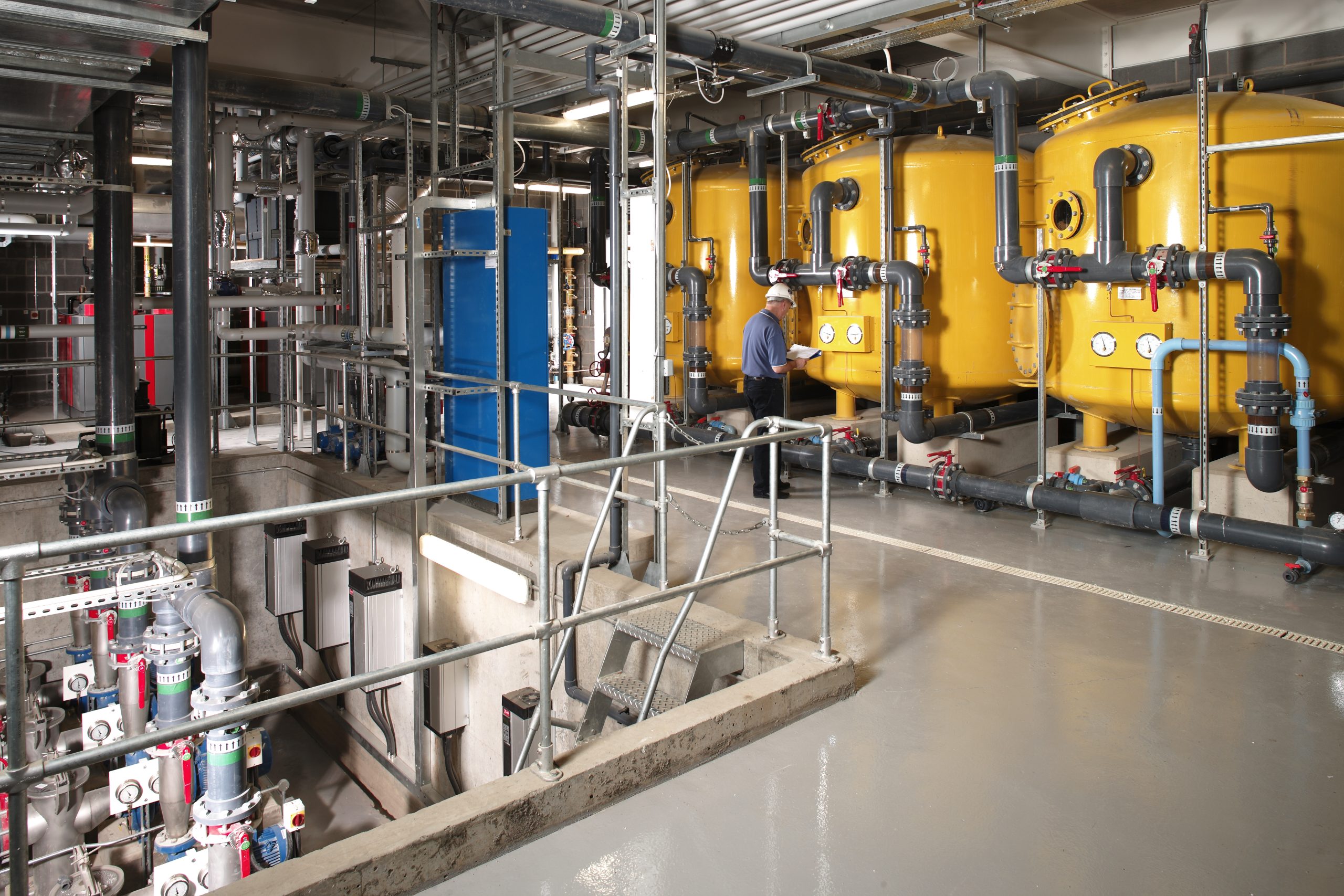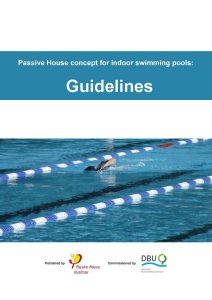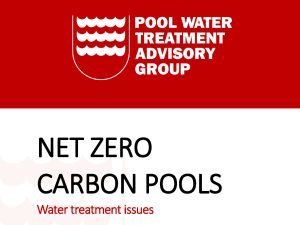
Update
Passive House – is it the best we can do?
27th February, 2024

The Passive House Guidelines on pool water treatment provide for an excellent starting point for addressing energy efficiency. They identify a number of critical metrics to be addressed, while ensuring safe and appealing water:
- power for unit flow of water by the circulating pump of 25 to 40 W per m3/hr
- total static and friction head of water of 5 to 10m
- overall circulating pump (inclusive of motor and frequency drive) efficiency greater than 70%.
The above metrics are inter-related; if the head is less than 10m and the pump efficiency is > 70%, then the power will be less than 40W.
A recent survey of nearly 100 pools in the UK identified that over 80% of the pools were operating outside of the upper 40W per m3/hr. This reflects outdated design, construction and operation of facilities in the UK, and identifies that we must do better in the future. Passive House and the new PWTAG guideline on Net Zero Carbon Pools, set out very clearly the wide range of options that are available to the various stakeholders to provide highly energy efficient water treatment systems; most of these options are not surprisingly design orientated.

Some of the key design issues are:
- location of the balance tank and the plantroom
- minimising energy losses through water falling by gravity
- optimising pipe and fitting sizes to minimise head losses
- optimising fitting types to minimise head losses
- minimising filtration head losses
- efficient pump, motor and VSD selection for the normal flow.
In the PWTAG Guideline, some 17 different points are identified that can contribute to better energy efficiency; filtration is just one of the 17.
Is Passive House the best we can do?
No is the answer, we can do more.
The energy required by the circulation pump is normally the main power requirement. However what is often ignored are the power requirements for other items such as booster pumps, control panels and crucially UV systems, and if not carefully addressed can be significant. This is clearly demonstrated by readings taken for two recent projects, one designed to Passive House and the other designed to very high overall energy efficiency standards.
| Metric | Project A | Project B |
| Power per unit flow – circulating pumps W per m3/hr | 53 | 64 |
| Power per unit flow – all treatment plant W per m3/hr | 89 | >100 |
Does Passive House require the use of ceramic membrane filters?
No is the answer, as there are many other areas where the headloss of the treatment system can be reduced. Some ceramic membrane filters require system pressures similar to sand filters, so the reason to use this type of filtration technology would not necessarily be for energy saving alone; there are however other considerations that may prompt their use.
The key message to be taken from the above is that a better and more inclusive performance metric is one that considers all of the electrical power requirements of the treatment system.






